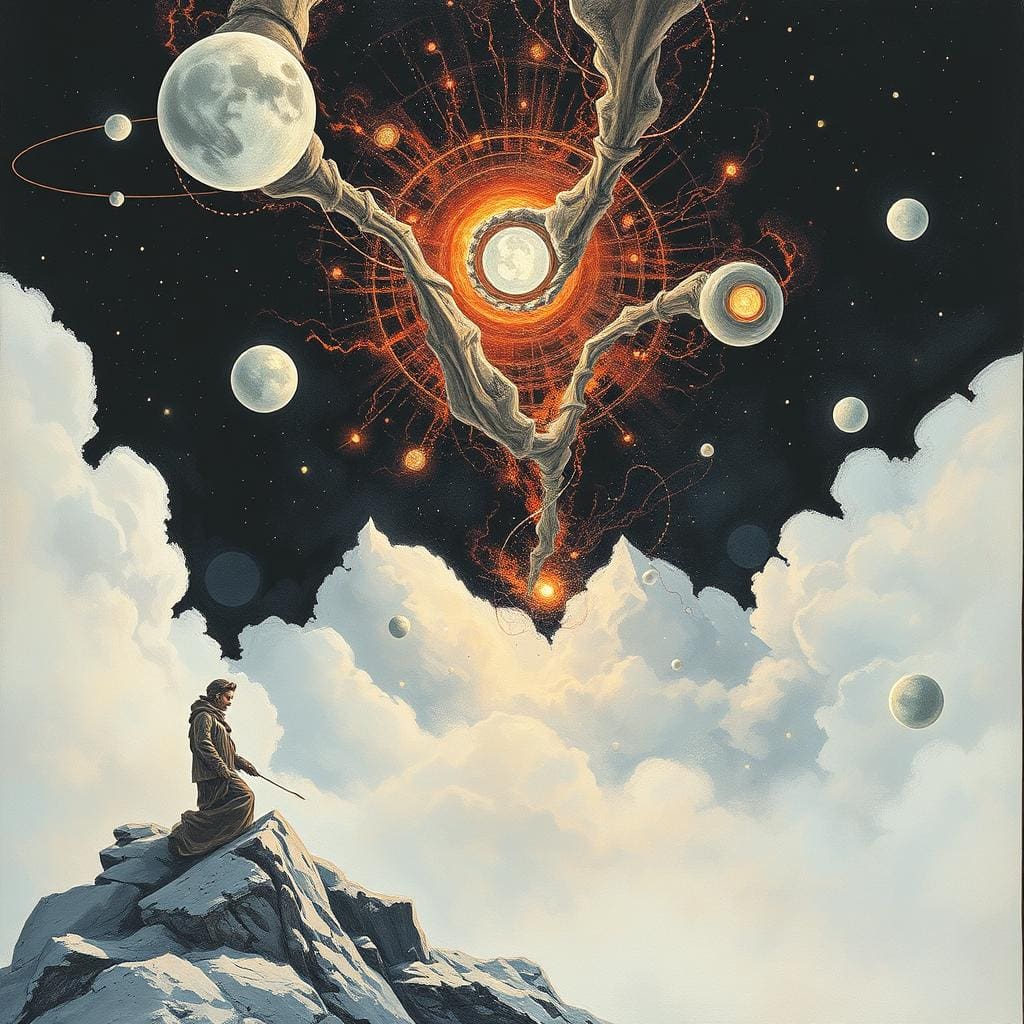Sun and Moon
Piet Mondrian
A Dutch painter and pioneer of abstract art, known for his use of simple geometric forms and bold primary colors.
Today AI generated programs marvel the world with unseen images of all kind. Generated from thousands and thousands of public images with unseen results. Adaptive or transformative. We use transformative.
Here a variation on sun and moon transformative generated images, based on the style of Piet Mondrian.
Enjoy!
PS
The portrait of the painter in featured image is transformative fictious and AI transformative generated as well.







Piet Mondrian, one of the most significant and influential artists of the 20th century.
Piet Mondrian was born on March 7, 1872, in Amersfoort, Netherlands. He was the second of five children, and his father was a headmaster at a local primary school. From a young age, Mondrian showed a keen interest in art, and he began taking lessons at the age of 14.
In 1892, Mondrian began studying at the Rijksacademie van Beeldende Kunsten in Amsterdam. There, he was exposed to a wide range of artistic styles, including Impressionism and Post-Impressionism. However, he was particularly drawn to the work of the Dutch painter Jan Toorop, who introduced him to the principles of Symbolism.
Throughout his career, Mondrian was interested in the relationship between art and spirituality. He was deeply influenced by the Theosophical Society, a spiritual movement that emphasized the unity of all things, and he believed that art had the power to reveal the underlying harmony and order of the universe.
In the early years of his career, Mondrian experimented with a range of styles, including landscape painting and Pointillism. However, he gradually became more interested in abstraction, and he began to develop a unique style characterized by geometric forms and primary colors.
Mondrian’s mature style is often referred to as Neoplasticism, or De Stijl, after the Dutch art movement of the same name. His paintings are characterized by their use of horizontal and vertical lines, and their composition of primary colors and black, white, and gray.
Mondrian’s work had a profound impact on the art world, and he is considered one of the pioneers of abstract art. His emphasis on geometric forms and primary colors influenced a wide range of other artists, including the Russian Constructivists and the American Minimalists.
Tragically, Mondrian’s life was cut short in 1944, when he died of pneumonia in New York City. However, his legacy has endured, and his influence can be seen in the work of many contemporary artists and designers.
Today, Mondrian is celebrated as one of the most significant and influential artists of the 20th century. His work represents a profound exploration of the relationship between art and spirituality, and his commitment to abstraction and geometric form continues to inspire and challenge artists and designers around the world.
Table with ten of Piet Mondrian’s most famous works, along with their titles, subjects, and meanings
| Title | Subject | Meaning |
| Composition with Yellow, Blue, and Red | Geometric abstraction | One of Mondrian’s most iconic works, featuring his characteristic use of primary colors and black, white, and gray, arranged in a balanced and harmonious composition. |
| Composition II in Red, Blue, and Yellow | Geometric abstraction | A classic example of Mondrian’s mature style, featuring a composition of horizontal and vertical lines, and blocks of primary colors that seem to vibrate and pulse with energy. |
| Broadway Boogie Woogie | Cityscape | A celebration of the energy and vibrancy of New York City, featuring a grid of squares in primary colors that suggest the city’s grid system and the movement of traffic and people. |
| Composition VIII | Geometric abstraction | A dynamic and complex work, featuring a range of geometric shapes and primary colors arranged in a balanced and harmonious composition. |
| Composition in Black and White | Geometric abstraction | A minimalist work, featuring a composition of horizontal and vertical lines, and black and white rectangles that create a sense of depth and space. |
| Composition III | Geometric abstraction | A classic example of Mondrian’s mature style, featuring a composition of horizontal and vertical lines, and blocks of primary colors that seem to float and shimmer on the canvas. |
| Composition No. 10 | Geometric abstraction | A complex and dynamic work, featuring a range of geometric shapes and primary colors arranged in a balanced and harmonious composition. |
| Composition No. 1: Lozenge with Four Lines | Geometric abstraction | A classic example of Mondrian’s early style, featuring a composition of intersecting lines and geometric shapes, arranged in a balanced and harmonious composition. |
| Composition in Blue, Yellow, and White | Geometric abstraction | A minimalist work, featuring a composition of horizontal and vertical lines, and blocks of blue, yellow, and white that create a sense of depth and space. |
| Composition with Large Blue Plane, Red, Black, Yellow, and Gray | Geometric abstraction | A dynamic and complex work, featuring a range of geometric shapes and primary colors arranged in a balanced and harmonious composition, with a large blue plane that anchors the composition. |
These works represent only a small portion of Mondrian’s vast and varied body of work, but they are among his most famous and influential. Each of these works showcases Mondrian’s unique and innovative approach to abstraction, and his ability to create works that are both balanced and dynamic, timeless and modern.

Thank you for questions, shares and comments!
Share your thoughts or questions in the comments below!
Text with help of openAI’s ChatGPT Laguage Models & Fleeky – Images with help of Picsart & MIB






